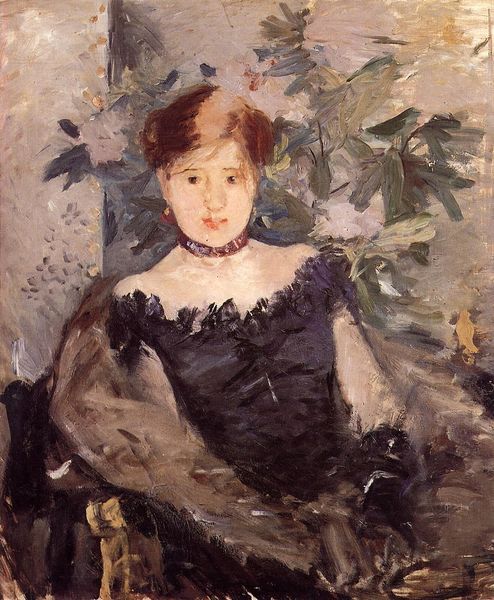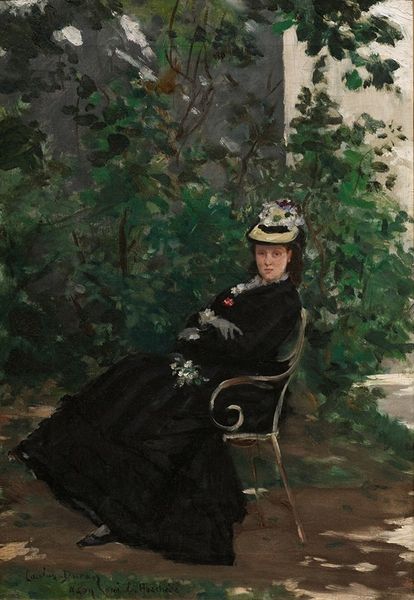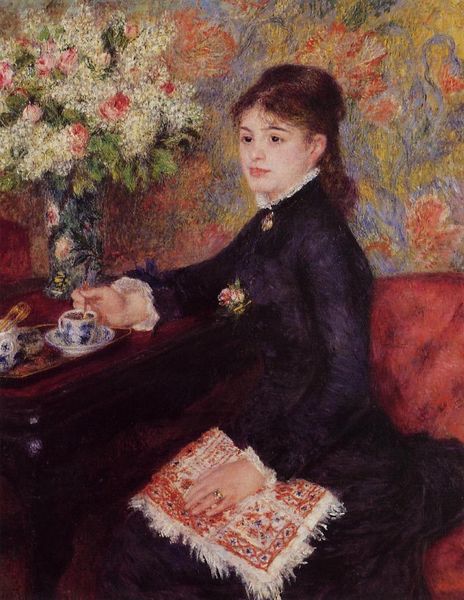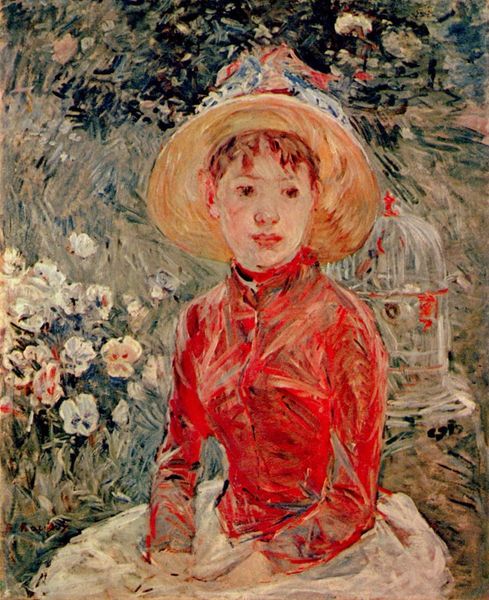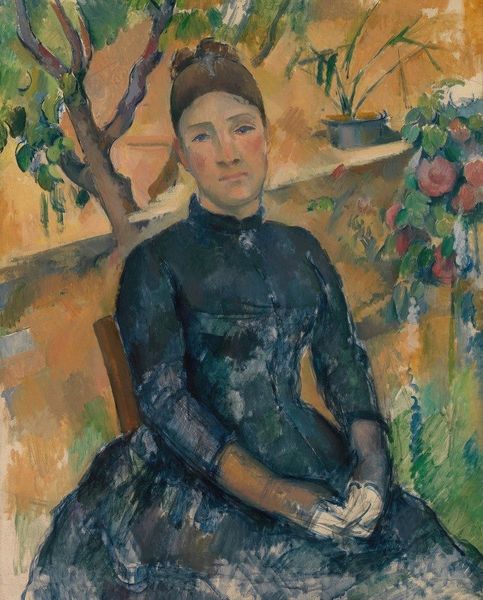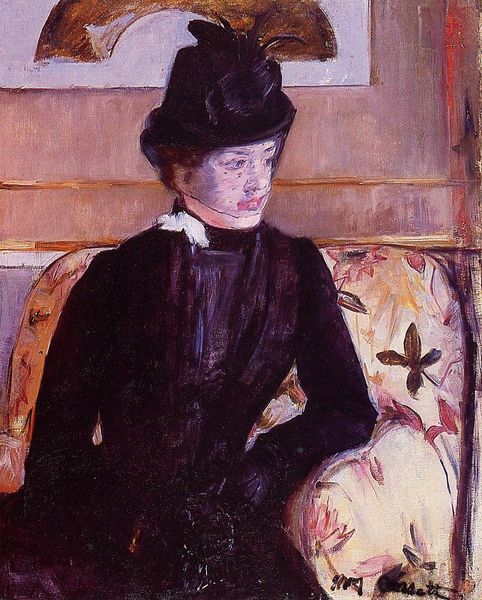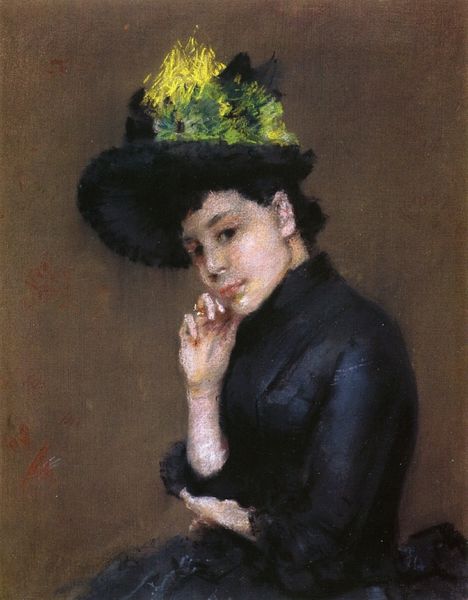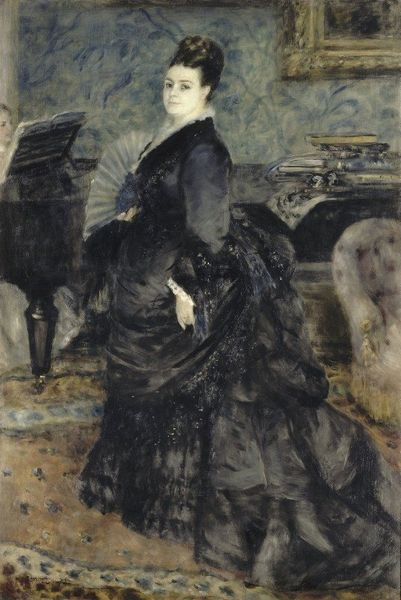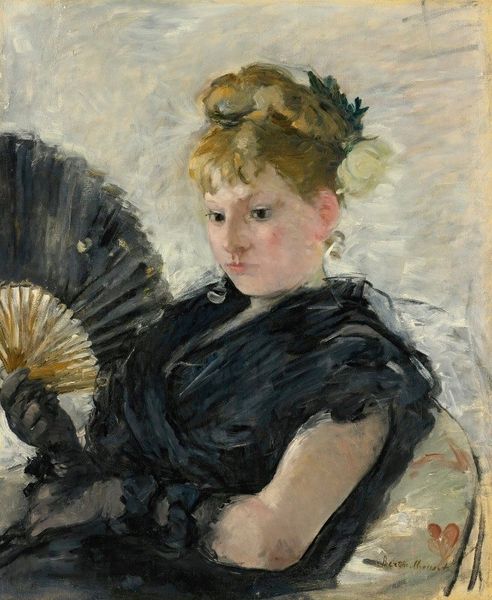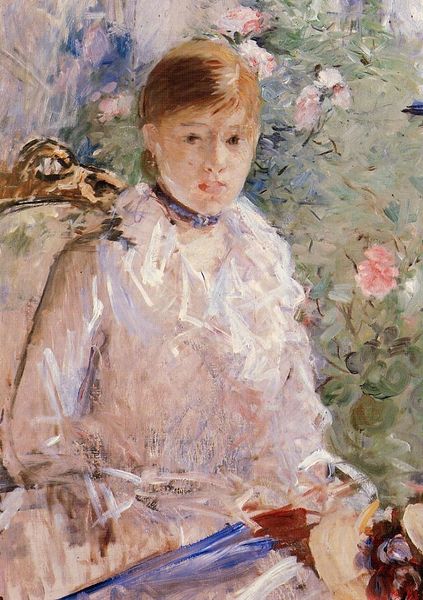
painting, plein-air, watercolor
#
portrait
#
tree
#
painting
#
impressionism
#
plein-air
#
landscape
#
figuration
#
oil painting
#
watercolor
#
female-portraits
#
watercolor
Copyright: Public domain
Editor: So, this is Berthe Morisot's "Young Lady Seated on a Bench," from 1864. It’s a watercolor piece, and it feels incredibly intimate. The dark dress against the garden background is striking, almost melancholic. What's your take? Curator: The choice of watercolor is key here. Consider its accessibility compared to oil paints during Morisot's time. Watercolor allowed for more immediate and portable artistic expression, particularly for women artists often confined to domestic spaces or plein air settings within close proximity. Think of it as a direct reflection of their restricted agency within the art world's established system of production and exhibition. Editor: That’s interesting. I hadn't considered the material itself as a statement. How does the plein-air aspect contribute? Curator: The immediacy of watercolor, combined with the outdoor setting, meant a faster production time, enabling Morisot to capture a fleeting moment. What does the sketch-like quality of the piece suggest to you about her working methods and perhaps her intentions concerning a market saturated by heavily labored and polished salon paintings? Does it push the boundaries of "finished" art? Editor: So it’s almost a defiance of traditional artistic labor through its very creation. The impressionistic style contributes to this? Curator: Exactly. Impressionism, in its challenge to academic art, disrupted established modes of artistic production and consumption. This piece questions traditional art hierarchies simply by existing in the way that it does: watercolor, made quickly, out of doors, by a woman. Where does that put it in the social fabric? Editor: I’m starting to see how the materiality and method reflect larger societal issues regarding artistic expression and labor. I learned so much more than if we had just talked about what the artist wanted to show. Curator: Precisely. By engaging with the means and circumstances of creation, we uncover deeper layers of meaning and challenge assumptions about the artist's intentions.
Comments
No comments
Be the first to comment and join the conversation on the ultimate creative platform.
